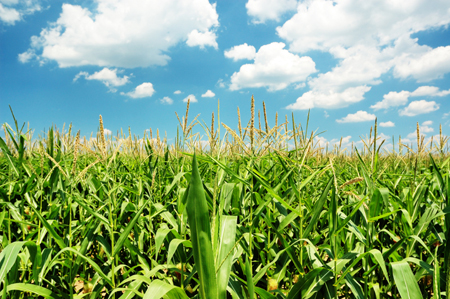Summer heat may have set bar too high for U.S. corn
Category: Grains
 (Reuters) – As harvest looms, the ag market keeps obsessing over the question of whether U.S. corn make the U.S. Department of Agriculture’s current target yield of 175.1 bushels per acre.
(Reuters) – As harvest looms, the ag market keeps obsessing over the question of whether U.S. corn make the U.S. Department of Agriculture’s current target yield of 175.1 bushels per acre.
Doubt has been building among industry participants, especially after last week’s Pro Farmer Midwest Crop Tour, which led the farm advisory service to project a national yield of 170.2 bushels per acre. That is the largest August prediction Pro Farmer has ever made.
But we may need to consider the possibility that even Pro Farmer’s estimate could be too optimistic for the world’s leading corn producer and exporter, as conditions have been deceptively warm across the Midwest for much of the summer.
With no change to harvested area, U.S. corn yield would have to drop below 164.25 bushels per acre, a 3 percent decrease versus the long-term trend, for 2016 to miss out on becoming the biggest corn crop ever produced in the United States.
Losses of that magnitude, while not impossible, seem unlikely given how far the crop has come up to this point, so record U.S. corn production seems to be all but locked up in 2016.
But with ever-increasing demand and a tight supply situation in South America, the United States needs to produce a record corn crop, and just a couple of bushels per acre lost can amount to a big deal.
SUMMER 2016 WAS WARM
The bottom line is that summertime weather across the U.S. Midwest has not been as favorable for corn development as it may seem. It is completely inaccurate to say that the weather has been poor, but compared with recent years it has been noticeably warmer.
August is the prime time for corn to undergo grain fill, and the more favorable the temperatures, the more grain each ear can produce. Ideally, Midwestern corn would like daytime highs around 80 degrees Fahrenheit and nighttime lows in the low 60s F during this time of year to maximize grain density and thus ear weights.
If nighttime temperatures are too high, corn plants undergo “wasteful respiration” and have less energy to devote to fattening the kernels. Overly warm nighttime conditions can easily fly under the radar if the daily highs are not consistently oppressive.
This happened in 2010 and it may be happening again in 2016. Nighttime low temperatures this August have been at the warmest levels since at least 2010, and the pattern has been sharply different from the previous two record-yielding years.
In 2010, corn yield fell by more than 12 bushels per acre from the initial August estimate to the final of 152.6 bushels per acre, with the largest drop occurring between the September and October USDA crop production reports.
FASTER NOT ALWAYS BETTER
In addition to August, nighttime low temperatures have been warm all summer, particularly against the previous two years. Average summer temperatures in general have been warm and completely different than the last three summers, which featured cooler temperatures.
Under consistently warm conditions, corn is pushed through its life cycle a bit more quickly than the plants would prefer. With corn, slow and steady is the way to maximize grain fill, though too slow – when weather is excessively cool – also hinders yield.
This year’s crop got planted relatively quickly, the third-fastest in the current decade, behind 2012 and 2010. So it is no surprise that corn moved through the silking stage in early July and entered the denting stage (when the matter within the kernel hardens) in August also at the third-fastest rates
But the early planting was no excuse for the swift entrance of denting, which is the last stop on the corn plant’s road to maturity.
The 1994 crop was planted just as quickly if not quicker than 2016, but silking and denting approached more slowly. The entire summer of 1994 was cooler than average, and the United States produced one of its best corn crops to date, with yield finishing nearly 14 percent above the long-term trend.
Historically, U.S. corn that enters the dent stage earlier than average does not perform as well by comparison. Throughout August, denting progress placed the 2016 crop with a pack of years in which the highest above-trend yield deviation was 1.6 percent (2000)
In the week ending Aug. 28, the current crop was 60 percent dented, a few percentage points ahead of the same date in 1994. This seemingly small difference may be noticeable in the end since warm weather pushed the 2016 crop toward maturity faster than is ideal, and this may have capped yield potential.
Back to the 2010 scenario, it does not fit perfectly with 2016 everywhere, particularly with 2010’s much faster denting rate, but the weather comparisons are undeniable. The warm nighttime temperatures make it especially difficult to believe that grain fill could have gone down without a hitch.
This is not to say that huge discounts to U.S. corn yield need to be considered this year, because a lot more has gone right than has gone wrong. But if a lot of states require just a slight shaving off the top, this could add up to a noticeable reduction in yield.
Viewed in this light, USDA’s 175.1 bushels per acre forecast seems extraordinarily tough to achieve. The agency will provide its next crop production update on Sept. 12.




